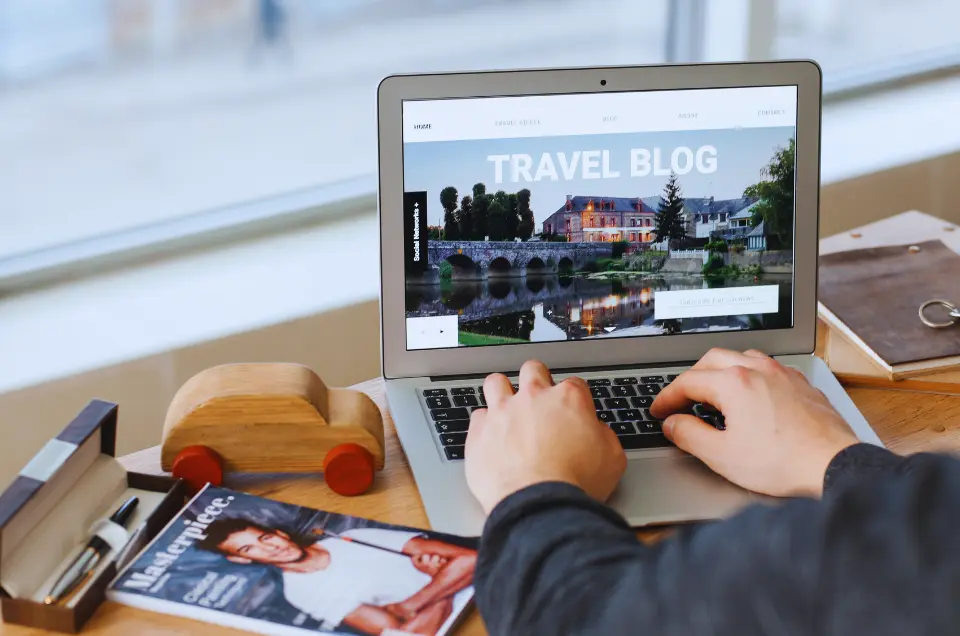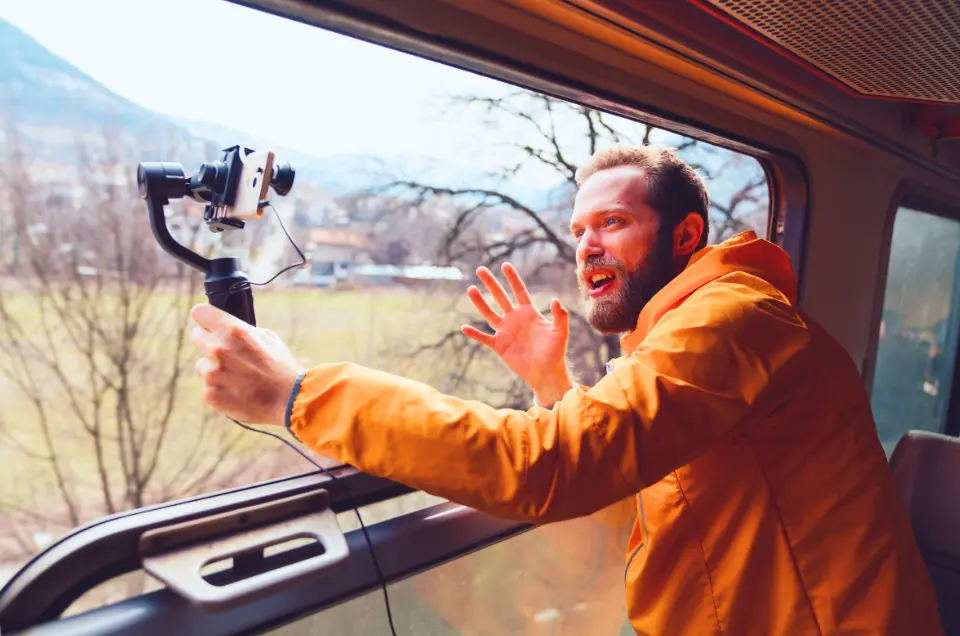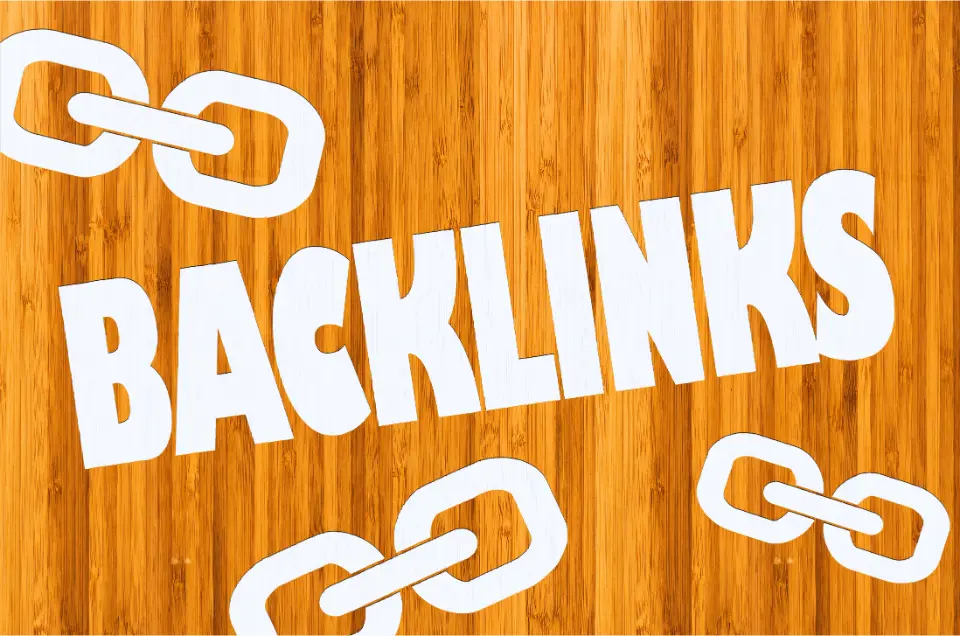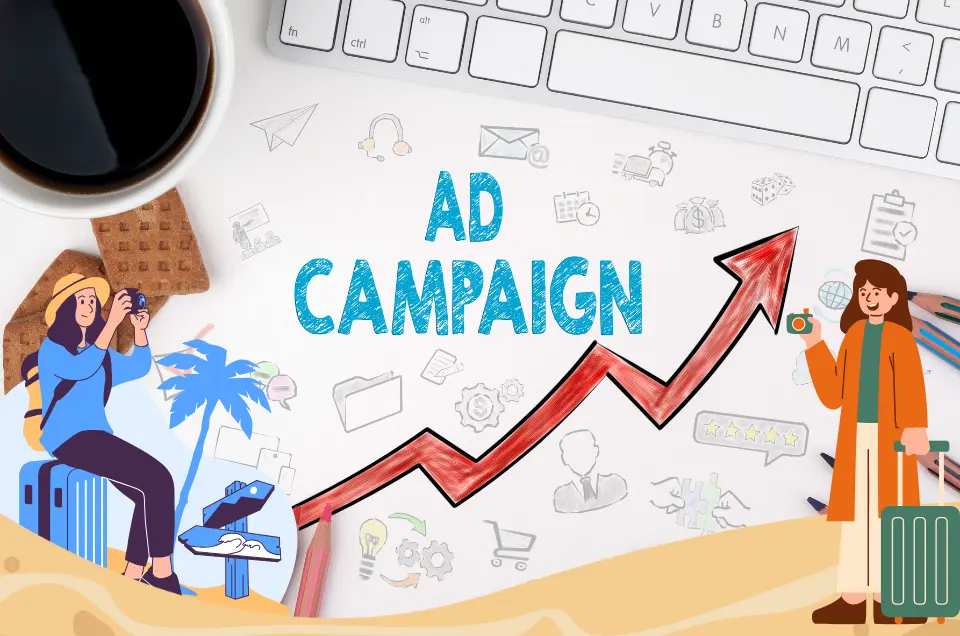Sponsored ads on travel blogs have a unique advantage—they speak directly to a very specific, highly engaged audience. Travel blogs typically attract passionate readers who are looking for inspiration, tips, or help planning their next adventure. By placing sponsored ads within this content, brands can reach travelers when they are most engaged and receptive.
Let’s say a hiking gear company sponsors a post on a blog focused on mountain trekking. The blog’s audience is already interested in hiking, so the ad hits a perfect target. Unlike broad, generic ads, these are precise and strategic.
Table of Contents
Benefits of targeting niche travel audiences
- Higher conversion rates due to audience relevance.
- Increased brand recall as users repeatedly see the brand in a trusted space.
- Stronger engagement because the product/service aligns with the blog content.
Moreover, travel blogs often have dedicated followers who return regularly, allowing sponsored ads to make repeated impressions over time.
Example:
A boutique hotel in Bali partners with a travel blogger to write a detailed review of their stay. Instead of a simple ad banner, the review includes personal experiences, photos, and helpful information. The hotel reaches potential travelers actively researching Bali trips, making the ad feel more like a recommendation than a promotion.

Amplifying Reach Through Authentic Storytelling
One of the greatest strengths of sponsored travel blog ads is their storytelling power. Bloggers know their audience and write in a relatable, engaging tone. When brands collaborate with them, the message gets woven into a narrative, making it more memorable and selling less.
Here’s what storytelling in sponsored content offers:
- Builds emotional connection with the audience.
- Demonstrates product/service value through real-life examples.
- Engages readers for longer, increasing exposure time.
Example:
Imagine a travel blogger taking a road trip across Europe sponsored by a car rental company. Instead of saying, “Rent from XYZ,” they share their day-to-day experiences, talk about the comfort of the vehicle, and even include photos of scenic routes. This narrative form of advertising doesn’t just sell a service—it sells a dream.
In today’s digital space, where consumers skip ads or use ad blockers, embedding the message in genuine storytelling makes it powerful, sticky, and share-worthy.
Why Readers Trust Travel Bloggers

Trust is everything in marketing, and travel bloggers have it in spades. Their audience follows them for personal insights, honest reviews, and authentic travel stories. When these bloggers recommend a brand via sponsored content, it carries the weight of a trusted friend’s suggestion.
Unlike anonymous reviews or corporate promotions, blog readers connect with the blogger. They’ve followed their journeys, seen their ups and downs, and valued their opinions.
Why this trust matters in advertising:
- Sponsored content is more likely to be taken seriously.
- Readers are more open to trying new products/services endorsed by bloggers.
- Recommendations from trusted sources convert at higher rates.
Example:
A sustainable luggage brand collaborates with a minimalist travel blogger known for eco-friendly travel. Readers who value sustainable choices are likelier to believe and act on the blogger’s recommendation.
Influencer Endorsements vs Traditional Ads

Traditional advertisements often seem impersonal or pushy. However, when a travel blogger integrates a brand into their real-life adventures, the recommendation feels natural and personal.
Here’s how influencer endorsements stand out:
- They offer real-world use cases and testimonials.
- They are seen in trusted, familiar environments (the blog).
- The tone is conversational, not corporate.
Real-life Example:
A well-known YouTuber who also blogs about solo travel partners with an international SIM card provider. Instead of a generic ad, they document how the SIM helped them stay connected in remote places. Viewers and readers see the product in action—making the endorsement relatable and trustworthy.
High-Quality Backlinks

One of the underrated benefits of sponsoring a travel blog post is the SEO juice it brings. When a reputable blog links to your brand’s website, search engines take note that these backlinks act as endorsements, improving your domain authority and boosting your rank in search engine results.
Key SEO benefits of backlinks from travel blogs:
- Signals credibility to search engines.
- Increases domain authority.
- Drives organic traffic long after the post is published.
Example:
A travel insurance company sponsors a detailed comparison post on a well-ranked travel blog. The post includes multiple backlinks to the company’s policy pages, driving direct traffic. The blog’s authority helps boost the company’s visibility in Google search results.
SEO Tips for Sponsored Content:
- Ensure the content is relevant to the target keyword.
- Use natural anchor text that blends into the content.
- Choose blogs with high domain authority and authentic traffic.
Long-Term Visibility on SERPs

Unlike paid ads that vanish when the budget runs out, blog posts often remain live for years. A well-optimized sponsored post can continue to drive traffic and visibility long after the initial campaign ends.
Why sponsored posts have staying power:
- Search engines index them and show up for relevant searches.
- They often get shared on social media and other platforms.
- Evergreen content (e.g., travel guides and destination reviews) stays relevant.
Example:
A travel booking site sponsors a post titled “Top 10 Affordable Beaches in Southeast Asia.” This post ranks for keywords like “cheap beaches in Asia” or “budget beach destinations” and continues to bring in clicks months or even years later.
Better ROI Than Traditional Advertising

Let’s face it—traditional advertising like billboards, TV, or print is expensive and often delivers vague results. On the other hand, sponsored ads on travel blogs offer measurable impact at a fraction of the cost. This is a game-changer for businesses—especially small to mid-sized travel-related brands.
Here’s why ROI is better with blog sponsorships:
- Highly targeted audience: You’re paying to reach people interested in travel, making conversions more likely.
- Integrated branding: Instead of just a logo or a tagline, your brand becomes part of a story.
- Trackable results: With UTM links, affiliate codes, and analytics, you can track clicks, conversions, and engagement directly.
Example:
A travel gadget startup promotes a universal adapter through a travel blog. Instead of a flat ad, the blogger writes a post about “Top 5 Travel Essentials You Didn’t Know You Needed.” The adapter features a link to purchase and a discount code. The startup tracks traffic and sees a significant sales boost within days, providing a clear ROI.
This long-term visibility and trust factor gives brands more value per dollar spent than many other channels.
Flexible Budgeting for All Business Sizes

Another beauty of sponsored ads on travel blogs is their flexibility. Whether you’re a local tour operator or a global travel brand, you can tailor your collaboration to fit your budget.
Sponsorship formats can include:
- A single blog post mention
- A full-feature review article
- Giveaway campaigns
- Social media shoutouts with blog integration
- Banner placements within existing content
You don’t need a massive marketing budget to get started. Many travel bloggers are open to negotiation, especially if your product aligns with their niche and offers value to their readers.
Example:
A family-run bed & breakfast in Tuscany partners with a travel blogger specializing in slow, experiential travel. With a modest budget, they arrange a blog post and Instagram story feature. The result? Increased web traffic, more direct bookings, and even a few travel influencers asking to collaborate.
Benefits of budget flexibility:
- Entry points for small businesses and startups.
- Scalable strategies as the business grows.
- Room for experimentation and creativity.
- By working directly with bloggers, brands can negotiate everything from content tone to timing and pricing, making it a customizable solution for diverse marketing needs.
Leveraging the Blogger’s Social Media Channels

When you sponsor a travel blog post, you’re not just getting visibility on the blog—you’re tapping into the blogger’s entire digital ecosystem. This includes Instagram, Facebook, Pinterest, YouTube, TikTok, and Twitter. It’s a full-package deal.
Why this matters:
- Most travel bloggers have highly engaged followers.
- Social media posts are shareable, commentable, and saveable.
- It boosts visibility and engagement in real time.
Example:
A travel clothing brand sponsors a blog post and includes an Instagram giveaway. The blogger shares behind-the-scenes Stories of trying on outfits, tags the brand, and encourages followers to enter the contest. This exposure can snowball into hundreds of new followers and clicks within hours.
Bullet Points to Highlight:
- Bonus exposure across multiple platforms.
- Increased social signals which can aid SEO indirectly.
- Engaged audiences mean higher chances of virality.
Social media boosts the visibility of sponsored posts while reinforcing brand awareness. When a blogger’s followers interact with your brand across platforms, it increases credibility and strengthens your presence in the market.
Drives Engagement and Shares

Let’s be honest—people love sharing helpful, fun, and inspiring content. When your brand is featured in a story worth telling, it can spread organically. A well-crafted travel blog post can be shared on Reddit threads, travel forums, Facebook groups, or even republished in newsletters.
How sponsored blog posts drive engagement:
- Compelling visuals and narratives invite comments and discussion.
- Informative guides are often bookmarked or saved for later.
- Unique experiences spark curiosity and interaction.
Example:
A drone company sponsors a blog post titled “Capturing Iceland from Above: My Drone Photography Journey.” The post features stunning aerial shots, tips for using drones in cold weather, and a product link. It gets shared on travel photography forums, repinned thousands of times on Pinterest, and even featured on a travel magazine’s roundup post.
Engagement isn’t just a vanity metric—it’s often the first step to conversion. A like or comment today could become a sale tomorrow.
Boosts Branded Content Efforts

For brands building a content marketing strategy, sponsored posts on travel blogs are a natural fit. You get quality content produced by a creator who understands storytelling and SEO, which drive results.
Why it works:
- Bloggers are content creators by trade.
- The content feels organic and fits seamlessly within the blog.
- You get exposure without having to produce the content yourself.
Example:
A travel insurance brand is looking to reach digital nomads. Instead of writing blog posts, they collaborate with three travel bloggers who write authentic stories about unexpected travel mishaps and how insurance saved their trip. Each post is informative and personal and subtly includes a call to action to explore insurance options.
Expands Content Distribution Channels

When you sponsor a post on a travel blog, the reach often goes far beyond that single blog. Good content gets shared, linked to, and sometimes syndicated or cited by other creators and platforms.
Content distribution avenues include:
- Social media platforms
- Email newsletters
- Community and niche forums
- Aggregator platforms like Medium or Flipboard
Example:
A travel pillow company sponsors a blog post on “How to Sleep Comfortably on Long Flights.” The post ranks well, gets shared across Reddit’s r/travel and Facebook travel groups, and even ends up on a “Top Travel Hacks” YouTube video roundup. That’s content distribution in full effect—all from one sponsored post.
This ripple effect enhances your online presence without requiring extra effort—once the content is out, the internet does the work for you.
Builds Long-Term Collaborations

Sponsored posts can be the starting point for deeper partnerships. Brands that connect well with bloggers often go on to do recurring features, product launches, ambassador programs, and more.
Example:
A travel booking platform starts with one sponsored post on a backpacker blog. The collaboration performs well, leading to a monthly feature, affiliate links, and, eventually, a co-branded campaign. The relationship evolves into long-term brand advocacy.
Quick Benefits:
- Easier future collaborations
- Consistent exposure
- Greater brand loyalty from influencer and their audience
Sparks Audience Participation

Sponsored content encouraging readers to share their stories, reviews, or photos can lead to a goldmine of UGC. This content builds credibility and is highly shareable.
Example:
A luggage brand sponsors a travel blog challenge called “Share Your Most Memorable Trip.” Readers post their stories on Instagram using the brand hashtag, organically spreading the brand message.
Benefits:
- Free marketing from real users
- Build a community around your brand
- Increases content variety and engagement
Conclusion
Sponsored ads on travel blogs are more than just paid promotions—they’re strategic, cost-effective, and powerful tools for brand growth. From SEO perks and long-lasting visibility to deep audience engagement and authentic storytelling, this form of advertising brings unmatched value.
Whether you’re a startup or an established brand in the travel industry, investing in well-targeted blog sponsorships can fuel your growth, build trust, and amplify your message across multiple platforms.
More Read
- Scenic Hot Springs: A Relaxing Escape to Nature
- Things to Do in London with Teens
- The Best Florida Souvenirs
- Costa Rica Flowers: A Colorful Paradise
- Things To Do in Monteverde, Costa Rica
- Top 12 Fun Facts About Costa Rica
- Top Places for Snorkeling in Costa Rica
- The Worst Time to Visit Costa Rica
- Romantic Weekend Getaways in NSW
- Romantic Getaways in Melbourne, Victoria
- How to Create the Perfect Itinerary For Your Trip
- Tamarind Hill SG: A Hidden Gem for Sunday Brunch
FAQs
Q: Are sponsored blog posts worth the investment?
A: Yes, especially for niche audiences. They offer long-term visibility, engagement, and SEO benefits.
Q: How do I find travel bloggers to sponsor?
A: Use platforms like Upfluence, AspireIQ, or even direct outreach through social media or blog contact pages.
Q: Can I track the performance of a sponsored post?
A: Absolutely. Use UTM links, affiliate codes, and blog traffic data to measure performance.
Q: How much do travel bloggers charge for sponsorships?
A: Costs vary based on audience size, engagement, and content type. Prices can range from $100 to several thousand dollars.
Q: What kind of content works best for sponsored travel posts?
A: Authentic, story-driven content with visual elements, personal experience, and clear value for readers works best.
Q: What are the Benefits of Sponsored Ads on Travel Blogs?
A: They boost brand visibility, increase SEO, build trust, and offer high ROI through targeted and engaging travel content.
Q: How do Sponsored Ads on Travel Blogs help SEO?
A: They provide high-quality backlinks and evergreen content that improves search rankings and drives long-term organic traffic.
Q: Are Sponsored Ads on Travel Blogs good for small businesses?
A: They offer cost-effective marketing, targeting niche audiences without a large advertising budget.
Q: Do readers trust Sponsored Ads on Travel Blogs?
A: Absolutely! Readers trust the bloggers they follow, making recommendations more like genuine advice than advertisements.
Q: Can Sponsored Ads on Travel Blogs generate sales?
A: They influence purchasing decisions by placing your brand in relatable stories that convert readers into customer









